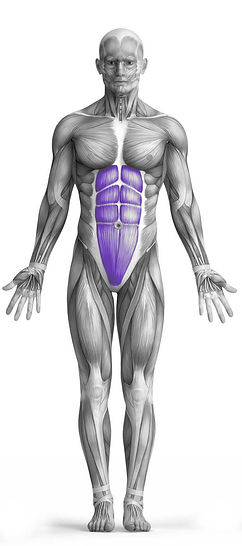Hanging Knee Raise With Twist 101 Video Tutorial
0

Exercise Synopsis
Target Muscle Group
Abs
Secondary Targets
Execution
Compound
Force Type
Pull
Required Equipment
Bodyweight
Fitness Level
Intermediate
Variations
None
Alternatives
None
Timer
Hour
Minute
Second
Stopwatch
00:00:00:00
Overview
The Hanging Knee Raise With Twist is an effective exercise that primarily targets the abdominal muscles, especially the obliques, while also engaging the forearms for grip strength. To perform this exercise, you hang from a pull-up bar or any sturdy overhead structure, then raise your knees toward your chest, twisting your lower body to each side alternately. This twisting motion activates the oblique muscles, enhancing core strength and stability. It requires no additional equipment beyond your bodyweight, making it a great addition to any workout routine focused on strengthening the core and improving grip endurance.
How to Perform
Begin by finding a sturdy bar or any object capable of supporting your weight, such as a pull-up bar. Grasp the bar with your hands positioned slightly wider than shoulder-width apart.
Hang from the bar with your arms fully extended and your legs slightly off the ground, ensuring your body remains steady and engaged.
Engage your core and raise your knees toward your chest, twisting your lower body to the left side, targeting the obliques and lower abdominal muscles.
Hold the raised position for a brief moment, then slowly lower your knees back down to the starting position.
Repeat the motion by lifting your knees again, this time twisting your body to the right side, continuing to focus on controlled movement and engaging your core.
Return to the starting position after the right-side twist. This completes one repetition.
Continue alternating the twisting knee raises for the desired number of repetitions, ensuring that each movement is deliberate and that your grip remains strong throughout the exercise.
Tips
To make the twisting knee raise more challenging, pause at the top of the movement when your knees are lifted, holding the position for a moment to increase intensity.
For more advanced practitioners, you can increase the difficulty by adding extra resistance. Hold a dumbbell between your feet while performing the exercise, further engaging your core and increasing the load.
How Not to Perform
Avoid Swinging Your Body: Do not use momentum to raise your knees. Swinging your body to get your knees up will take the focus off your abs and obliques, and it can lead to unnecessary strain on your back. Perform the movement with control, using your core muscles to lift your legs.
Don't Let Your Grip Slip: Ensure your hands are firmly gripping the bar. A weak grip can lead to instability and can make the exercise less effective. Focus on squeezing the bar with your forearms to maintain control throughout the movement.
Don't Overextend Your Back: Avoid arching your lower back excessively while hanging. Keep your spine neutral to protect your lower back and maintain proper form. Engage your core throughout to prevent unnecessary stress on your back.
Don’t Rush the Movement: Take your time with each rep. Moving too quickly can cause you to lose form and prevent the engagement of your core muscles. Control the ascent and descent of your knees to maximize the exercise's effectiveness.
Avoid Letting Your Legs Drop Too Quickly: When lowering your knees, do not let them drop too fast. Instead, lower them slowly to keep constant tension on the target muscles and engage the core throughout the entire movement.
Don't Over-Twist: Avoid excessive twisting when raising your knees to each side. Focus on a controlled, deliberate twist to target your obliques without straining your lower back or other areas. Keep the movement smooth and avoid forcing the twist.
Don't Let Your Feet Touch the Ground: Keep your feet slightly off the floor while hanging. Letting them touch the ground can break the tension in your core, reducing the effectiveness of the exercise. Maintain your position with your legs slightly lifted throughout.
Avoid Using Too Much Weight (for Advanced Athletes): If adding weight with a dumbbell, don't overdo it. Start with a manageable weight and focus on maintaining proper form. Too much weight can compromise your form and lead to injury.
Variations
Variations of fitness exercises refer to different ways of performing a specific exercise or movement to target various muscle groups, intensities, or goals. These variations aim to challenge the body differently, prevent plateaus, and cater to individuals with varying fitness levels.
Alternatives
Alternative exercises in fitness refer to different movements or activities that target similar muscle groups or serve the same training purpose as the primary exercise. These alternative exercises can be used as substitutes when the original exercise is unavailable or challenging to perform due to various reasons such as equipment limitations, injuries, or personal preferences.



